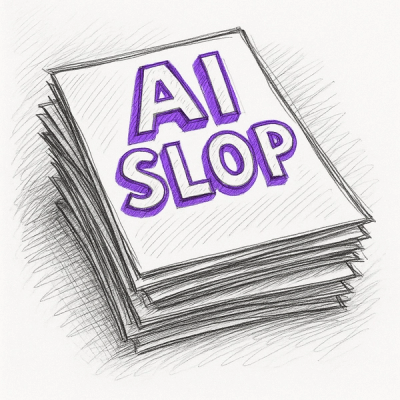
Security News
Official Go SDK for MCP in Development, Stable Release Expected in August
The official Go SDK for the Model Context Protocol is in development, with a stable, production-ready release expected by August 2025.
The geojson npm package provides utilities for working with GeoJSON data, which is a format for encoding a variety of geographic data structures. It allows you to create, manipulate, and validate GeoJSON objects easily.
Creating GeoJSON Objects
This feature allows you to create GeoJSON objects from an array of data points. The example demonstrates how to convert an array of locations with latitude and longitude into a GeoJSON object.
const geojson = require('geojson');
const data = [
{ name: 'Location 1', lat: 40.7128, lng: -74.0060 },
{ name: 'Location 2', lat: 34.0522, lng: -118.2437 }
];
const geojsonData = geojson.parse(data, { Point: ['lat', 'lng'] });
console.log(JSON.stringify(geojsonData, null, 2));Validating GeoJSON Objects
This feature allows you to validate GeoJSON objects to ensure they conform to the GeoJSON specification. The example shows how to validate a GeoJSON object representing a point feature.
const geojson = require('geojson');
const geojsonData = {
type: 'FeatureCollection',
features: [
{
type: 'Feature',
geometry: {
type: 'Point',
coordinates: [-74.0060, 40.7128]
},
properties: {
name: 'Location 1'
}
}
]
};
const isValid = geojson.isValid(geojsonData);
console.log(isValid);Converting GeoJSON to Other Formats
This feature allows you to convert GeoJSON objects to other formats such as KML. The example demonstrates how to convert a GeoJSON object to KML format.
const geojson = require('geojson');
const geojsonData = {
type: 'FeatureCollection',
features: [
{
type: 'Feature',
geometry: {
type: 'Point',
coordinates: [-74.0060, 40.7128]
},
properties: {
name: 'Location 1'
}
}
]
};
const kml = geojson.toKML(geojsonData);
console.log(kml);Terraformer is a JavaScript library for working with GeoJSON, including parsing, converting, and manipulating GeoJSON data. It offers more advanced spatial operations compared to geojson, such as buffering and union operations.
GeoJSON Utils is a utility library for working with GeoJSON data. It provides functions for calculating distances, bounding boxes, and other spatial operations. It is more focused on spatial calculations compared to geojson.
Turf is a powerful geospatial analysis library for JavaScript. It provides a wide range of spatial operations, including measurements, transformations, and data classification. Turf is more comprehensive and feature-rich compared to geojson.
Turn your geo data into GeoJSON.
For node, use npm: $ npm install geojson
In the browser, include geojson.min.js. For example: <script type="text/javascript" src="js/geojson.min.js"></script>
In node, var GeoJSON = require('geojson');
In the browser, the library is available at GeoJSON.
The library has one method, parse, which takes an array of objects (or a single object) with geometry data as the first parameter, an object consisting of settings for the second parameter, and an optional callback function as the third parameter. If a callback is not specified, the parse function returns the GeoJSON output.
Take the example data below:
var data = [
{ name: 'Location A', category: 'Store', street: 'Market', lat: 39.984, lng: -75.343 },
{ name: 'Location B', category: 'House', street: 'Broad', lat: 39.284, lng: -75.833 },
{ name: 'Location C', category: 'Office', street: 'South', lat: 39.123, lng: -74.534 }
];
Convert it to GeoJSON:
GeoJSON.parse(data, {Point: ['lat', 'lng']});
{
"type": "FeatureCollection",
"features": [
{ "type": "Feature",
"geometry": {"type": "Point", "coordinates": [-75.343, 39.984]},
"properties": {
"name": "Location A",
"category": "Store"
}
},
{ "type": "Feature",
"geometry": {"type": "Point", "coordinates": [-75.833, 39.284]},
"properties": {
"name": "Location B",
"category": "House"
}
},
{ "type": "Feature",
"geometry": {"type": "Point", "coordinates": [ -75.534, 39.123]},
"properties": {
"name": "Location C",
"category": "Office"
}
}
]
}
Convert the example data to GeoJSON, and only include the name attribute in properties for each feature.
GeoJSON.parse(data, {Point: ['lat', 'lng'], include: ['name']});
{
"type": "FeatureCollection",
"features": [
{ "type": "Feature",
"geometry": {"type": "Point", "coordinates": [-75.343, 39.984]},
"properties": {
"name": "Location A"
}
},
...
{ "type": "Feature",
"geometry": {"type": "Point", "coordinates": [ -75.534, 39.123]},
"properties": {
"name": "Location C"
}
}
]
}
You can also convert a single object to a GeoJSON feature:
var singleobject = { name: 'Location A', category: 'Store', street: 'Market', lat: 39.984, lng: -75.343 }
GeoJSON.parse(singleobject, {Point: ['lat', 'lng']});
{
"type": "Feature",
"geometry": {"type": "Point", "coordinates": [-75.343, 39.984]},
"properties": {
"name": "Location A",
"category": "Store"
}
}
The parse method can handle data with different geometry types. Consider the following sample data:
var data2 = [
{
x: 0.5,
y: 102.0,
prop0: 'value0'
},
{
line: [[102.0, 0.0], [103.0, 1.0], [104.0, 0.0], [105.0, 1.0]],
prop0: 'value0',
prop1: 0.0
},
{
polygon: [
[ [100.0, 0.0], [101.0, 0.0], [101.0, 1.0], [100.0, 1.0], [100.0, 0.0] ]
],
prop0: 'value0',
prop1: {"this": "that"}
}
];
For each geometry type, specify which attribute contains the geometric data
GeoJSON.parse(data2, {'Point': ['x', 'y'], 'LineString': 'line', 'Polygon': 'polygon'});
{
"type": "FeatureCollection",
"features": [
{
"type": "Feature",
"geometry": {
"type": "Point",
"coordinates": [102,0.5]
},
"properties": {
"prop0": "value0"
}
},
{
"type": "Feature",
"geometry": {
"type": "LineString",
"coordinates": [[102, 0], [103, 1], [104, 0],[105, 1]]
},
"properties": {
"prop0": "value0",
"prop1": 0
}
},
{
"type": "Feature",
"geometry": {
"type": "Polygon",
"coordinates": [[[100, 0], [101, 0], [101, 1], [100, 1], [100, 0]]]
},
"properties": {
"prop0": "value0",
"prop1": {
"this": "that"
}
}
}
]
}
You can also specify default settings if you will be parsing mutliple datasets with similiar attributes.
var data1 = [{ name: 'Location A', street: 'Market', x: 34, y: -75 }];
var data2 = [{ name: 'Location B', date: '11/23/2012', x: 54, y: -98 }];
GeoJSON.defaults = {Point: ['x', 'y'], include: ['name']};
GeoJSON.parse(data1, {});
{
"type": "FeatureCollection",
"features": [
{
"type": "Feature",
"geometry": {
"type": "Point",
"coordinates": [-75, 34]
},
"properties": {
"name": "Location A"
}
}
]
}
GeoJSON.parse(data2, {});
{
"type": "FeatureCollection",
"features": [
{
"type": "Feature",
"geometry": {
"type": "Point",
"coordinates": [-98, 54]
},
"properties": {
"name": "Location B"
}
}
]
}
You can specify a callback function as an option third parameter.
GeoJSON.parse(data, {Point: ['lat', 'lng']}, function(geojson){
console.log(JSON.stringify(geojson));
});
Depending on which makes more sense for the data that is being parsed, either specify an array of attributes to include or exclude in properties for each feature. If neither include nor exclude is set, all the attributes (besides the attributes containing the geometry data) will be added to feature properties.
include - Array of attributes to include in properties for each feature. All other fields will be ignored.exclude - Array of attributes that shouldn't be included in feature properties. All other attributes will be added (besides geometry attributes)The geometry parameters specify which attribute(s) contain(s) the geographic/geometric data. A geometry parameter must be specified for each type of geometry object that is present in the data that is being parsed. For example, if the data contains both points and polygons, specify both the Point and Polygon parameters. Note that geometry parameters must be in proper case. See the GeoJSON spec for details on each geometry type. The structure of the geometry parameter is:
ParameterName: 'attributeName'
Except for Point, which can be specified with a field name or an array of field names, i.e:
data = [{ name: 'location', x: 34, y: 85 }];
GeoJSON.parse(data, {Point: ['lat', 'lng']});
or
data = [{ name: 'location', coords: [85, 34] }];
GeoJSON.parse(data, {Point: 'coords'});
The valid geometry types are
PointMultiPointLineStringMultiLineStringPolygonMultiPolygonTo parse already encoded GeoJSON use
GeoJSON
var data = [{name: 'Location A', geo: {"type": "Point", "coordinates": [125.6, 10.1]}}];
GeoJSON.parse(data, {GeoJSON: 'geo'});
"type": "FeatureCollection",
"features": [{
"type": "Feature",
"geometry": {
"type": "Point",
"coordinates": [125.6, 10.1]
},
"properties": {
"name": "Location A"
}
}]
}
geojson.js also supports the optional GeoJSON properties bbox and crs.
crs - An object identifying a coordinate reference system. More informationbbox - A bounding box for the feature collection. An array with the following format: [y1, x1, y2, x2]. More informationYou can add arbitrary properties to features using the extra param. The value for extra must be an object. For example, using the original sample data:
GeoJSON.parse(data, {
Point: ['lat', 'lng'],
extra: {
style: {
"color": "#ff7800",
"weight": 5,
"opacity": 0.65
}
}
});
{
"type": "FeatureCollection",
"features": [
{ "type": "Feature",
"geometry": {"type": "Point", "coordinates": [-75.343, 39.984]},
"properties": {
"name": "Location A",
"category": "Store",
"style": {
"color": "#ff7800",
"weight": 5,
"opacity": 0.65
}
}
},
...
}
You can also add dataset properties using the extraGlobal param. The value for extraGlobal must be an object.
GeoJSON.parse(data, {
Point: ['lat', 'lng'],
extraGlobal: {
'Creator': 'Mr. Example',
'records': data.length,
'summary': 'A few example points'
}
});
{
"type": "FeatureCollection",
"features": [
{ "type": "Feature",
"geometry": {"type": "Point", "coordinates": [-75.343, 39.984]},
"properties": {
"name": "Location A"
}
},
...
{ "type": "Feature",
"geometry": {"type": "Point", "coordinates": [ -75.534, 39.123]},
"properties": {
"name": "Location C"
}
}
],
"properties": {
"Creator": "Mr. Example",
"records": 2,
"summary": "A few example points"
}
}
For node, $ npm test.
For the browser, visit test/test.html.
$ grunt will run test.js, then lint and minify geojson.js.
$ grunt all will do all the above, plus run the browser tests, test.html. Note that this requires PhantomJS.
Licensed under the MIT License. See LICENSE for details.
FAQs
Turn your geo data into GeoJSON
The npm package geojson receives a total of 283,590 weekly downloads. As such, geojson popularity was classified as popular.
We found that geojson demonstrated a not healthy version release cadence and project activity because the last version was released a year ago. It has 1 open source maintainer collaborating on the project.
Did you know?

Socket for GitHub automatically highlights issues in each pull request and monitors the health of all your open source dependencies. Discover the contents of your packages and block harmful activity before you install or update your dependencies.

Security News
The official Go SDK for the Model Context Protocol is in development, with a stable, production-ready release expected by August 2025.

Security News
New research reveals that LLMs often fake understanding, passing benchmarks but failing to apply concepts or stay internally consistent.

Security News
Django has updated its security policies to reject AI-generated vulnerability reports that include fabricated or unverifiable content.